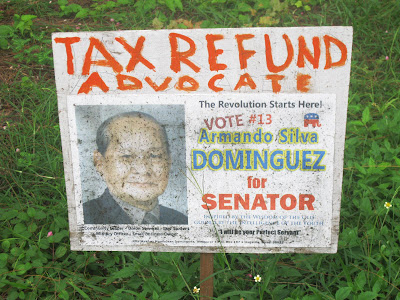Okinawa Independence #3: The Chamorro Lining
-->
I wrote on my Facebook the day I arrived in Okinawa “Sweet
Home Okinawa :)”
I am not Okinawan and have never lived in Okinawa, but after
being there three times in 1 year and a half, I have developed an interesting relationship to the place. I started writing about this last year in my blog post "Coming Home." People in Japan tend to assume my origin in the following ways:
#1: People would ask me if I was Ainu, the indigenous people of Japan
who the government and most people pretended to be non-existent for
quite a while.
#2: I was from Hokkaido. I have no idea what people from Hokkaido look like, but if I was to imagine myself as some sort of Japanese person, it would be from Hokkaido.
#3: People regularly asked if I was from Okinawa.
#2: I was from Hokkaido. I have no idea what people from Hokkaido look like, but if I was to imagine myself as some sort of Japanese person, it would be from Hokkaido.
#3: People regularly asked if I was from Okinawa.
But eventually I wrote that the historical and contemporary connections between our islands actually make me feel oddly at home in a place I have barely visited. I wrote that my coming to Okinawa was a "homecoming" in both a positive sense of finding allies in the struggle
This trip the idea of Okinawa being home has gone to a whole
new level.
While waiting for a lecture by Yasukatsu Matsushima to start
at Okinawa International University, Ed Alvarez and I took stock of the
audience. We were scanning the crowd for acrtivists that we had met on earlier
trips. In particular Ed was hoping to see Takara Ben, a poet and former
teacher, who he regularly refers to as his “che’lu,” his brother. When I had met
Ben last year he had given me a copy of a book that one of his photographs and
essays were in. I couldn’t read the essay but I appreciated the gift.
One of the reasons that Ed felt such a kinship with Ben is
the fact that Ben looks incredibly Chamorro. He could pass for just about any Chamorro with a Spanish last name. If you saw him sitting with other
manamko’ at McDonalds in Hagatna, you would think he was a Tumon High Grad from
1963. He looks so Chamorro you could Photoshop him into the photo of a
Crisostomo or Salas family reunion and no one would think him
out of place, they would just try to figure out which uncle he is.
On this trip and our last trip, Ed and I have had numerous
potential Chamorro sightings. As we were waiting for Ben to show up (ti in li'e' gui'), we remarked on other Okinawans entering the
lecture hall and what families they could belong to on Guam. We saw a man who
could absolutely be the brother of Rufo and David Lujan. We say a guy who looks
exactly like Alex Aflague. Another guy was definitely a Manglona from
Rota. That guy is definitely an Artero.
This woman was a Leon Guerrero for sure.
It was a fun sort of game, and one
that had us regularly bursting into laughter when we would identify an Okinawan
person with a Chamorro family and then remark about how it was “so true.” They
could totally be this, or totally be that. We even went so far as to say that this person could be from this clan or this village. This looks like a Sablan from Agat, you know "pochada'."
We tried to think if there were any other ethnicities where
people could do something like this. We agreed a lot of ethnicities could do
this, but most of them see the features, color and demeanor of their community
in a narrow sense. They do not have a sort of expansive visual vocabulary, not
the way Chamorros do. Some Chamorros are light, brown, white, red, yellow, with
noses of all sorts, sizes of all sorts, hair of all sorts. Ti unu na matan Chamorro, guaha meggai na mata siha.
Some people may
argue that the browner you are the more Chamorro you are, but everyone who even thinks about that for a moment should know it isn't true. It has long been disproven that having a “Chamorro”
last name makes you more Chamorro. Also being darker doesn’t make you more
Chamorro. The village you’re from doesn’t mean you automatically practice the
culture more. Those sorts of essentialist ideas are problematic for every
culture, and so I am happy that Chamorros are more expansive and inclusive in
the way they articulate Chamorroness. So long as you can claim any drop of
blood in you, you are Chamorro.
Chamorros have absorbed so much over the years and part of
the pleasure we can take in feeling like so many people could be Chamorro is
the silver lining we embrace from the fact that everyone thinks we could be
something else.







Comments